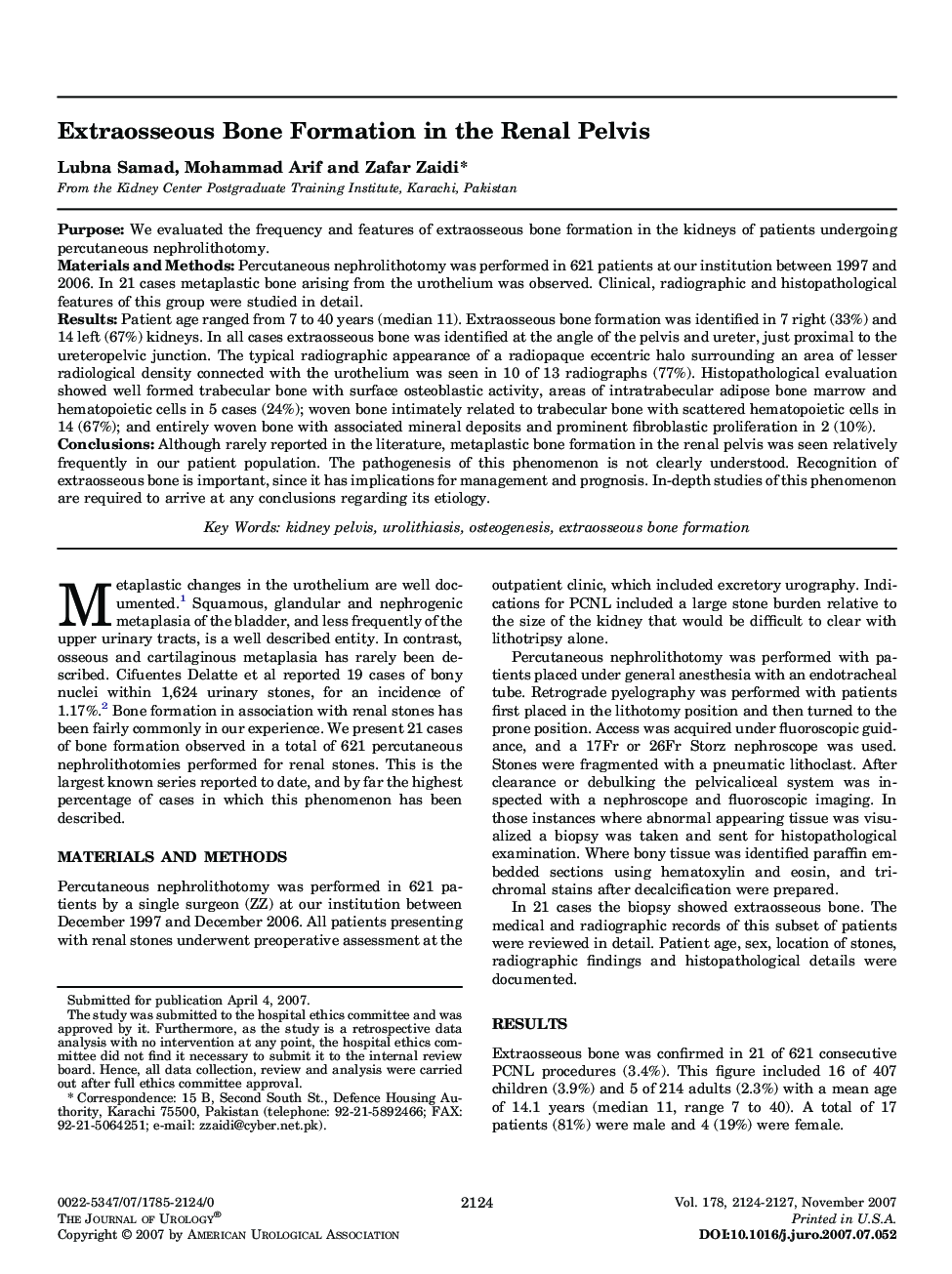| Article ID | Journal | Published Year | Pages | File Type |
|---|---|---|---|---|
| 3873326 | The Journal of Urology | 2007 | 4 Pages |
PurposeWe evaluated the frequency and features of extraosseous bone formation in the kidneys of patients undergoing percutaneous nephrolithotomy.Materials and MethodsPercutaneous nephrolithotomy was performed in 621 patients at our institution between 1997 and 2006. In 21 cases metaplastic bone arising from the urothelium was observed. Clinical, radiographic and histopathological features of this group were studied in detail.ResultsPatient age ranged from 7 to 40 years (median 11). Extraosseous bone formation was identified in 7 right (33%) and 14 left (67%) kidneys. In all cases extraosseous bone was identified at the angle of the pelvis and ureter, just proximal to the ureteropelvic junction. The typical radiographic appearance of a radiopaque eccentric halo surrounding an area of lesser radiological density connected with the urothelium was seen in 10 of 13 radiographs (77%). Histopathological evaluation showed well formed trabecular bone with surface osteoblastic activity, areas of intratrabecular adipose bone marrow and hematopoietic cells in 5 cases (24%); woven bone intimately related to trabecular bone with scattered hematopoietic cells in 14 (67%); and entirely woven bone with associated mineral deposits and prominent fibroblastic proliferation in 2 (10%).ConclusionsAlthough rarely reported in the literature, metaplastic bone formation in the renal pelvis was seen relatively frequently in our patient population. The pathogenesis of this phenomenon is not clearly understood. Recognition of extraosseous bone is important, since it has implications for management and prognosis. In-depth studies of this phenomenon are required to arrive at any conclusions regarding its etiology.
